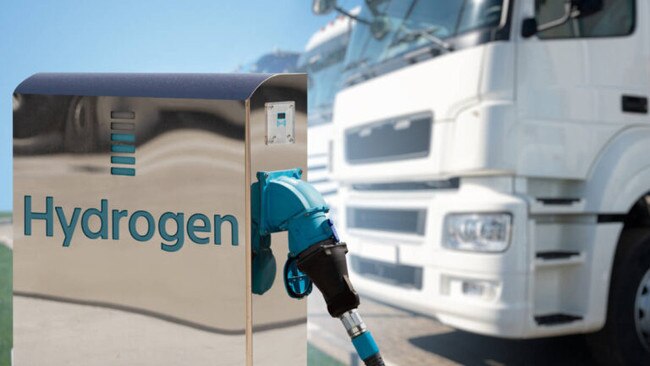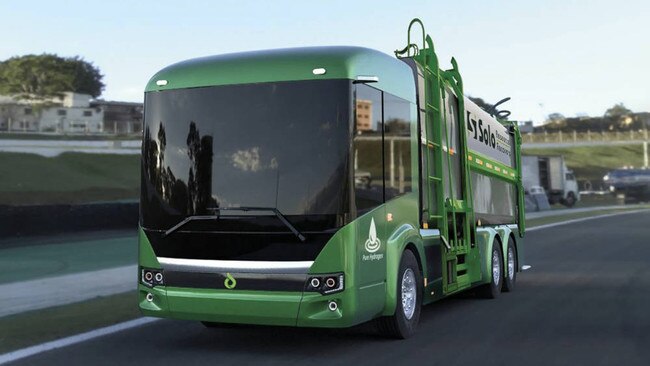ASX companies championing hydrogen with plans to drive adoption
Hydrogen just hasn’t been able to gather the same momentum solar energy and other renewables enjoy. But these companies are out to change that.

Stockhead
Don't miss out on the headlines from Stockhead. Followed categories will be added to My News.
Hydrogen has long been touted as one of the key planks in the green bridge that will take us towards net zero emissions, by replacing fossil fuels and enabling hard-to-abate industries such as chemicals and steelmaking to slash emissions.
But while solar and other renewables have made significant headway globally – the apparent slowdown in Australian grid-scale projects notwithstanding, the progress made by hydrogen has been comparatively muted.
For the latest energy news, sign up here for free Stockhead daily newsletters
Billionaire Mike Cannon-Brooke winning the battle for control of the Sun Cable project has taken the potential for a giant hydrogen development proposed by fellow billionaire Andrew Forrest off the table, while the going has been slow on the giant 2.2GW Central Queensland Hydrogen Project (CQ-H2) that is supposed to start production in 2028.
Other sizeable projects such as the Western Green Hydrogen Hub and the Australia Renewable Energy Hub are also some time away from becoming reality.
That’s not to say that no progress has being made.
The Australian and South Australian governments recently committed to providing the Port Bonython hydrogen hub near Whyalla, with a total of $100 million in funding.
And the NSW government has agreed to pony up $45 million for Origin Energy’s (ASX:ORG) Hunter Valley hydrogen hub on Koorangang Island.
Building local hydrogen demand
Junior ASX companies operating in the space believe that the key towards building a hydrogen ecosystem is take what is essentially a bottom-up approach, first building up local demand for the green gas before expanding to greater things – such as export.
Speaking to Stockhead, Pure Hydrogen (ASX:PH2) managing director Scott Brown said he believed that large-scale adoption of hydrogen would occur in heavy transport, buses, shipping and possibly aviation.
“While battery-electric is good for certain areas, particularly smaller applications – like passenger cars, once you start carrying big loads, it is very difficult to power up a big truck and that’s where hydrogen comes in,” he said.
“Effectively you can still run on an electric platform and have all the advantages that platform offers, the hydrogen and the fuel cell will essentially generate the electricity for you. It just extends range or grants more power to do things.
MORE FROM STOCKHEAD: Storage the key for renewables | Are we staring down abyss of $US100 oil? | ASX stocks step in as war rolls on
“A good example will be something like a garbage truck, which needs to travel around, pick up garbage bins at every household and then compact it.
“The arm and compactor use a lot of energy, which is very difficult to do if you are using batteries. All of the trials that we have done using batteries in Australia failed.
“A hydrogen fuel cell will give it much more power to be able to cart the truck around and perform those tasks.”

The ‘value meal’ approach
Brown also believes that Pure Hydrogen has the right approach towards succeeding in the hydrogen space and that’s by providing customised solutions to customers.
“We have solutions we can offer large corporates, the top 500, local and state governments, and depending on what their requirements are we can cater and tailor for the specific requirements of the customer,” he said.
“The good thing is when you sell a truck or bus, inevitably people want to know that they can get hydrogen to power them and provide maintenance.
“We can supply both the hydrogen and the maintenance.”
Besides offering a range of hydrogen fuel cell trucks and buses, the company also has plans to produce hydrogen using its methane pyrolysis technology that will decompose methane into hydrogen and solid carbon without any carbon dioxide emissions.
“Just like Macdonald’s have a value meal, we have a value meal for hydrogen products,” Brown added.
“It is all packaged up, they don’t have to go anywhere else, it is an easy solution for them.”
This approach certainly seems to be paying dividends for the company.
In the last couple of months, it has executed a terms sheet with waste management company Solo Resource Recovery for the supply of a HFC powered waste collection vehicle for a six-month trial, adding to a previous trial agreement with JJ Richards Waste.
Visit Stockhead, where ASX small caps are big deals
Hydrogen powering clean future
Brown believes that the hydrogen sector is poised to grow exponentially.
“You are already seeing plants going in. I think next year, we hope to have our own production of hydrogen, then a lot of other players in the industry are also talking about having production,” he said.
‘We have trucks and buses that are available now, people can order them and they will certainly be in use in Australia.
“You will see a lot more of them next year and then, it will snowball once people start accepting that this is a good way of doing it, not just reducing your emissions but you also benefit from a number of very good attributes.”
Different strategies, same purpose
Pure Hydrogen might be seeing success with its approach, but it certainly isn’t the only ASX listed junior with ambitious hydrogen plans.
Frontier Energy (ASX:FHE) is focused on advancing its Waroona solar energy project, which has all major permits, approvals and a connection to the WA electricity network already in place, towards being “shovel-ready” before the end of this year.
Stage 1 development of the project will seek to deliver 120MW of power into the grid though approved connections are in place to take this up to 355MW. Total grid connection capacity is much higher at 1.1GW.
However, the company also has plans to make a splash in the hydrogen sector with a study under way into the development of a peaking plant that will be the first consumer of the green hydrogen production proposed under its definitive feasibility study (DFS).
The DFS has proposed the construction of a 72MW electrolyser (in 36MW building blocks) that would fully use the quantum of energy produced by the solar farm.
Hydrogen produced when the sun is strongest – and when wholesale energy prices are at the lowest – could be stored and use in the peaking plant when demand for electricity is at its highest (and when the realised price tends to be the highest).
Peaking plants are a mature technology that can be switched on at short notice to provide power at peak demand times, providing stability to the grid while allowing green hydrogen to fuel the plant rather than natural gas.
Adding further interest, this also gives the company the option to offtake hydrogen to other potential users.
Meanwhile, BPH Energy (ASX:BPH) has increased its stake in Clean Hydrogen Technologies up to 17.5 per cent.
The US company is developing its own in-house solution to generate a clean hydrogen product and solid carbon for batteries with no CO2 emissions from natural gas.
This content first appeared on stockhead.com.au
At Stockhead we tell it like it is. While Pure Hydrogen, Frontier Energy and BPH Energy are Stockhead advertisers, it did not sponsor this article.
SUBSCRIBE
Get the latest Stockhead news delivered free to your inbox. Click here
Originally published as ASX companies championing hydrogen with plans to drive adoption


